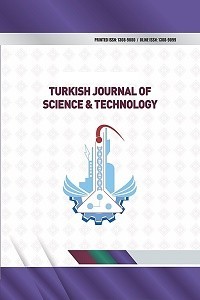Assessment of Earthquake Behavior of Reinforced Concrete Buildings with Slab Discontinuity
Assessment of Earthquake Behavior of Reinforced Concrete Buildings with Slab Discontinuity
___
- 1.Özmen, C. and Ünay, A.İ. (2007). Commonly Encountered Seismic Design Faults due to the Architectural Design of Residential Buildings in Turkey. Building and Environment, 42, 1406–1416. 2.Ulucan Z.Ç. and Yön B. (2008). Nonlinear Earthquake Response of A2 Slab Discontinuity Irregularity Structures Using Rigid and Elastic Diaphragm Assumptions. Science and Engineering Journal of Fırat University, 20, 315–323. 3.Yön B., Öncü M.E, and Ulucan ZÇ. (2010). Investigation of Effect of Slab Opening Location to the Shear Stress. Journal of Pamukkale University Engineering Science, 16, 45-51. 4.Celep Z. and Kumbasar, N. (2004). Introduction to Earthquake Engineering and earthquake resistant structural design. pp. 700. Beta Distribution, İstanbul. 5.Turkish Sesimic Code, (2007). Anakara-Turkey. 6.SAP 2000 V9.0.1. (2004). Integrated Finite Element Analysis and Design of Structures, Computer and Structures Inc. Berkeley, California. 7.Pacific Earthquake Engineering Research Center Strong Motion Database 8.SeismoArtif v2.1: A computer program for generating artificial earthquake accelerograms matched to a specific target response spectrum. Available at: www.seismosoft.com [July 19, 2013] 9.SeismoSignal v5.1 - A computer program for the processing of strong-motion data. Available at: www.seismosoft.com [July 19, 2013]
- ISSN: 1308-9080
- Başlangıç: 2009
- Yayıncı: Fırat Üniversitesi
Assessment of Earthquake Behavior of Reinforced Concrete Buildings with Slab Discontinuity
Musa YETKİN, Yusuf CALAYIR, Hakan ERKEK
CFD Analysis of Ilısu Dam Sluice Outlet
M. Cihan AYDİN, Ali Emre ULU, Çimen KARADUMAN
Taner ALATAŞ, Mehmet YİLMAZ, Baha Vural KÖK
Deformation Measurements and Analysis with Robust Methods: A Case Study, Deriner Dam
Berkant KONAKOĞLU, Ertan GÖKALP
Finite Element Solution of the Contact Problem
Pembe Merve KARABULUT, Murat YAYLACI, Ahmet BİRİNCİ
Implementation of Two Cell Non-Autonomous CNN Model on FPGA
Bariş KARAKAYA, Vedat ÇELİK, Arif GÜLTEN
Özge ERDOĞAN YAMAÇ, Mehmet YILMAZ, Baha Vural KÖK
Determination of Fracture Paramaters of Effective Crack Model by Wedge-Splitting Test
Investigation of the Properties of Warm Mix Asphalt Involving Organic Additive
Ali Topal, Baha Vural Kök, Derya Kaya, Burak Şengöz, Peyman Dokandari, Mehmet Yılmaz
